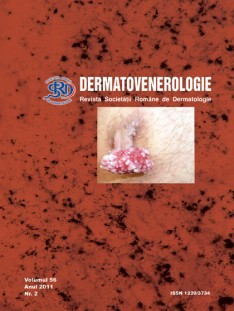Clinical trials and experimental
Identification of a possible array of specific variations of cytokines in the context of the appearance of cutaneous manifestations, in patients with HIV-AIDS, in Romania
Since 1981, when the first reports about AIDS were published in medical literature, skin and mucocutaneous diseases played an important role in the clinical diagnosis of acquired immunodeficiency, because skin disease is one health problem among human immunodeficiency virus in seropositive patients.[8] Cutaneous disorders during HIV infection are numerous, a broad spectrum of common cutaneous infections was noted in patients due to viruses,bacteria, fungi, protozoa, and parasites as well as many unusual manifestationsof common dermatoses, and some Cutaneous disorders reflect the progression of HIV disease; though the relation is still controversial. AIDS causes a variation in the level of cytokines in circulation.[5] We want to issue a theory about distinct cytokine profiles in patients with dermatological manifestations associated with HIV, which will help us to distinguish various skin diseases and to diagnose and properly treat these opportunistic infections, and to improve the quality of life of these patients and also to prevent possible complications of the disease.[11] In order to launch a theory about cytokines variations in patients with HIV associated with a skin disease, we studied a group of 107 patients in different stages of HIV infection, treated with antiretrovirals therapy. Skin manifestations in these patients were identified as herpes zoster, candidiasis, syphilis, and lipodystrophy. In these patients we determined the blood levels of TNFα, IL6, and the CD4 and viral load. Management of skin disease in HIV-positive patients can be challenging for the dermatologist, because skin lesions may be more severe and the cutaneous manifestations may recur with greater frequency, and can be refractory to standard treatment. The existence of active antiretroviral therapy (HAART) further complicates the picture so that a profile of cutaneous cytokines, correctly determined, may well be helpful for diagnosis and treatment.[3][6]


